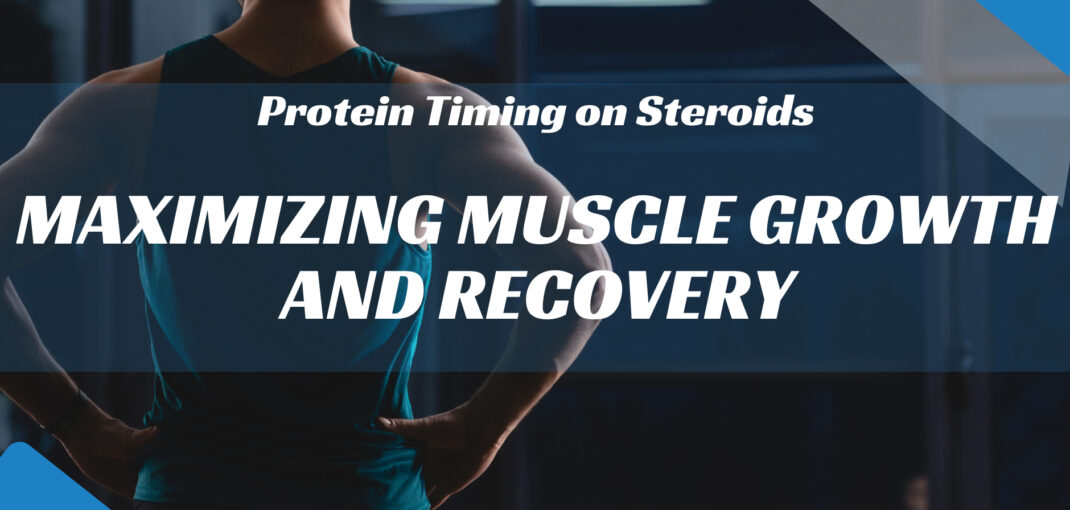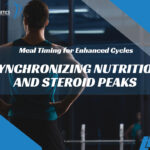Protein Timing Steroids: How to Build More Muscle in Less Time
When it comes to achieving elite-level muscle growth, most athletes understand the importance of nutrition. But few realize that timing their protein intake can be just as critical as the total amount consumed. The concept of protein timing—strategically spacing out protein consumption throughout the day—has been a staple in bodybuilding for decades, designed to optimize recovery, muscle protein synthesis (MPS), and performance. However, when anabolic compounds enter the equation, the dynamics change dramatically. Protein timing on steroids elevates the body’s potential for growth and repair, but it also demands more precision. Because steroids dramatically accelerate muscle metabolism, the body becomes capable of processing protein at a faster rate. This means that eating protein-rich meals or shakes at the right intervals can directly determine how much of that protein is converted into new muscle tissue.
At Bio Genetics USA, we emphasize that strategy is everything. Knowledge isn’t just power—it’s progress. By understanding the interaction between steroids and the body’s anabolic pathways, athletes can design meal plans that take full advantage of their cycle’s effects. This not only leads to faster recovery and bigger gains but also protects long-term muscular health, hormonal balance, and metabolic efficiency.
Why Protein Timing Becomes More Critical During Steroid Cycles
When using anabolic steroids, your muscle cells are in a constant state of readiness to synthesize new proteins. This heightened anabolic state can be wasted if the body doesn’t have enough amino acids circulating at key times—especially pre- and post-workout. Unlike natural athletes, steroid users experience prolonged windows of elevated muscle protein synthesis, which can last 24–48 hours after training.
By aligning your protein intake with this anabolic window, you can:
- Fuel muscle growth continuously, rather than sporadically.
- Prevent muscle catabolism during periods of calorie restriction.
- Maximize nitrogen retention, supporting a positive anabolic environment.
- Improve recovery speed, allowing you to train harder and more frequently.
Think of your muscles as a construction site. Steroids act like a 24-hour crew ready to build new muscle tissue, but without steady deliveries of materials (protein), progress slows or stops altogether.
The Science: How Steroids Influence Protein Synthesis
To fully appreciate protein timing on steroids, it’s essential to understand what happens at the cellular level. Anabolic steroids—synthetic derivatives of testosterone—work by binding to androgen receptors in muscle cells. Once activated, these receptors trigger several biological processes that dramatically enhance protein synthesis and muscle recovery.
Here’s a closer look at the mechanisms involved:
1. Increased Nitrogen Retention
Nitrogen is a key component of amino acids—the building blocks of protein. Maintaining a positive nitrogen balance is the cornerstone of muscle growth. Steroids help the body retain more nitrogen than it expels, creating a sustained anabolic state. This allows your muscles to remain in “growth mode” for longer periods, even when dietary protein fluctuates.
2. Amplified mTOR Signaling
The mTOR (mechanistic target of rapamycin) pathway is one of the most powerful regulators of muscle growth. When stimulated by both training and amino acids—particularly leucine—mTOR signals cells to start building new muscle proteins. Steroids intensify this signaling, leading to faster recovery and greater hypertrophy after each training session.
3. Reduced Protein Breakdown (Anticatabolic Effect)
While muscle gain depends on synthesis, preventing muscle breakdown is equally crucial. Steroids reduce the activity of catabolic hormones like cortisol and limit muscle protein degradation. This means that even during cutting cycles or periods of calorie deficit, your body holds on to more lean muscle mass.
4. Enhanced Red Blood Cell Production
Many anabolic steroids increase erythropoiesis (red blood cell production), improving oxygen delivery to muscles. Better oxygenation enhances endurance and recovery, allowing athletes to handle more intense training loads. Combined with proper protein timing, this creates the perfect environment for accelerated adaptation and growth.
The Role of Insulin and Amino Acid Availability
Protein timing doesn’t operate in isolation—it interacts closely with hormones like insulin, which plays a crucial role in transporting amino acids into muscle cells. Consuming protein alongside carbohydrates can trigger a mild insulin response, enhancing amino acid uptake and stimulating anabolic activity.
Steroid users, in particular, benefit from pairing fast-digesting proteins (like whey isolate) with moderate carbs post-workout, ensuring a rapid spike in both insulin and amino acid levels. This synergy drives faster nutrient absorption and better muscle glycogen restoration, giving you more fuel for your next session.
Why Precision Matters More Than Quantity
You could be consuming 250 grams of protein per day, but without the right timing, much of it may not be effectively utilized. The human body can only absorb and process a limited amount of protein per feeding—typically 25–40 grams for optimal synthesis. Excess protein outside of the anabolic window may simply be oxidized for energy instead of muscle repair.
That’s why advanced athletes focus on:
- Consistent distribution: Dividing protein intake evenly across 4–6 meals daily.
- Workout-centered timing: Prioritizing intake before and after training.
- Slow-release sources: Consuming casein or mixed proteins at night for sustained amino acid delivery during sleep.
When done right, these strategies ensure that every gram of protein contributes directly to muscle recovery and hypertrophy.
How Bio Genetics USA Helps Optimize Your Cycle
At Bio Genetics USA, we educate athletes on integrated performance nutrition—combining science-backed supplementation, proper timing, and recovery. Our resources, guides, and supplement formulations are designed to complement your goals, whether you’re bulking, cutting, or maintaining.
We provide products that support:
- Enhanced nutrient absorption (through digestive enzymes and adaptogens).
- Hormonal balance during on- and off-cycles.
- Liver and kidney protection through detox-supporting compounds.
- Sustainable muscle recovery, so your progress lasts long after your cycle ends.
Because optimal results aren’t just about steroids—they’re about understanding your body’s rhythm and fueling it intelligently.
Why Protein Timing Matters
Consuming protein at the right times ensures that amino acids are available exactly when your muscles need them most—before, during, and after training. On steroids, this process becomes even more critical because muscle tissue is primed for constant growth and repair.
Key benefits of proper protein timing include:
- Enhanced muscle recovery after intense training sessions.
- Reduced muscle breakdown during fasted or calorie-deficit periods.
- Improved nitrogen balance for sustained anabolic activity.
- Greater efficiency in nutrient absorption and utilization.
The Optimal Protein Timing Strategy for Steroid Users
To fully leverage the anabolic potential of steroids, timing protein intake around your workout schedule and daily rhythm is essential.
1. Pre-Workout (1–2 Hours Before Training)
Fuel your muscles before they’re taxed.
- Goal: Provide amino acids for energy and muscle protection.
- Ideal Sources: Lean meat, eggs, or a whey isolate shake with slow-digesting carbs (like oats).
- Example: 25–35g protein + 30–40g carbs.
2. Intra-Workout (Optional for High-Intensity Sessions)
During extended or heavy lifting sessions, intra-workout nutrition helps maintain endurance and reduces muscle breakdown.
- Goal: Prevent catabolism during prolonged training.
- Ideal Sources: Essential amino acids (EAAs) or branched-chain amino acids (BCAAs).
- Example: 10–15g EAA or BCAA blend in water.
3. Post-Workout (Within 30 Minutes After Training)
This is the anabolic window—the most crucial feeding period.
- Goal: Trigger rapid muscle repair and replenish glycogen.
- Ideal Sources: Whey protein isolate + simple carbohydrates (like fruit or dextrose).
- Example: 40–50g whey protein + 50–60g fast carbs.
4. Before Bed
Sleep is when growth hormone peaks and recovery accelerates.
- Goal: Prevent overnight muscle breakdown.
- Ideal Sources: Casein protein or cottage cheese (slow-digesting).
- Example: 25–30g casein protein powder or 1 cup of low-fat Greek yogurt.
Daily Protein Targets: How Much Is Enough?
For athletes using anabolic steroids, protein requirements are significantly higher than the average lifter.
| Athlete Type | Goal | Recommended Protein Intake |
| Natural Lifter | Maintenance | 1.0–1.2g per pound of body weight |
| Steroid User (Bulking) | Muscle Gain | 1.5–2.0g per pound of body weight |
| Steroid User (Cutting) | Muscle Retention | 1.8–2.2g per pound of body weight |
These higher levels ensure continuous amino acid availability for rapid protein turnover and recovery.
The Role of Protein Sources in Steroid Nutrition
Not all proteins are created equal. When on steroids, the body processes nutrients faster, so choosing high-quality, easily digestible proteins becomes vital.
Top sources include:
- Whey isolate: Fast-digesting, perfect for post-workout.
- Casein: Slow-releasing, ideal before bed.
- Egg protein: Balanced amino acid profile and high bioavailability.
- Lean meats and fish: Rich in creatine and essential micronutrients.
- Plant-based options (pea, soy, rice): Suitable for vegan athletes when combined for full amino acid coverage.
Supporting Protein Absorption with Superfoods
To get the most from your diet, you must support your digestive system. That’s where superfood blends come in—especially greens and reds powders.
Athletes who include these nutrient-dense formulas often experience better digestion, reduced inflammation, and improved nutrient uptake. Learn more in our detailed article:
Greens and Reds Superfood Powders: Do They Boost Absorption?
By pairing proper protein timing with these superfood supports, athletes can ensure that every gram of protein is fully utilized for growth and recovery.
Safe Usage Guidance and Responsible Stacking
- Hydration: Drink at least 3–4 liters of water daily to support kidney function.
- Cycle balance: Include rest days and off-cycles to prevent metabolic fatigue.
- Micronutrient support: Add multivitamins, electrolytes, and liver-support supplements for balance.
- Monitor progress: Regularly check weight, sleep quality, and muscle recovery markers.
Remember—steroids amplify what you already do right. Smart nutrition, rest, and supplementation are the real performance multipliers.
Why Athletes Trust Bio Genetics USA
At Bio Genetics USA, we go beyond basic supplementation—we deliver education, quality, and results. Our brand stands for:
- Science-backed performance: Every recommendation is based on physiology and research.
- Premium-grade supplements: Tested for purity, potency, and safety.
- Customer empowerment: We educate athletes to use supplements intelligently.
- Secure, reliable shopping: Fast delivery, discreet packaging, and world-class support.
We don’t just build stronger bodies—we build stronger athletes who understand their craft.
Conclusion: Perfecting Protein Timing on Steroids
Protein timing on steroids isn’t just about meeting your macros—it’s about synchronizing nutrition with your body’s enhanced anabolic rhythm. When done right, it amplifies growth, reduces recovery time, and maximizes the benefits of your steroid cycle.
At Bio Genetics USA, we believe knowledge is the ultimate supplement. By understanding how to fuel your body with precision—through protein timing, balanced nutrition, and smart stacking—you can achieve powerful results safely and sustainably.
👉 Elevate your performance with science-backed supplements at the Bio Genetics USA Shop.






